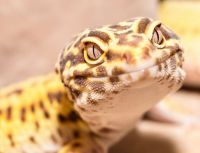15 facts about hummingbirds
Hummingbirds first appeared on Earth about 22 million years ago in South America. To this day, they live exclusively in the intertropical zone of the ...
21 facts about Shoebill
The Shoebill is a large African bird that lives in wetlands far from human settlements.
Its characteristic large, massive beak, which resembles a wood ...
14 facts about Hyacinth macaw
Extremely beautiful, appreciated by breeders around the world. It is found in areas of South America, in Brazil, Paraguay, Bolivia, but the most numer ...

























